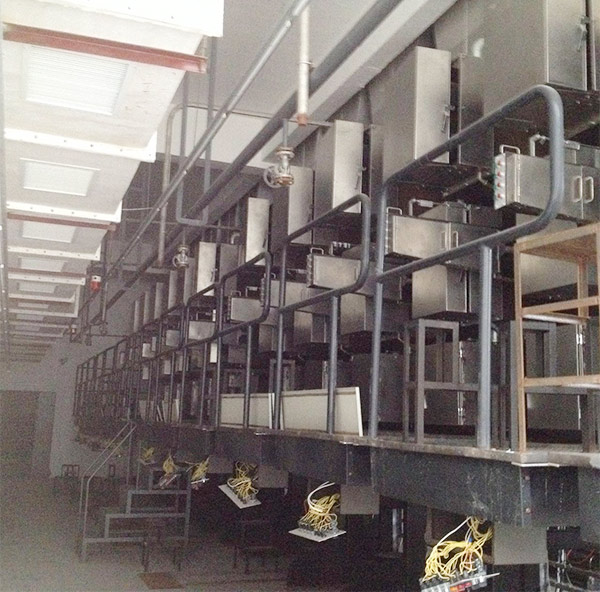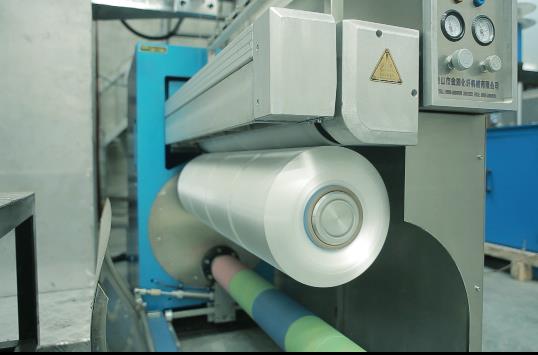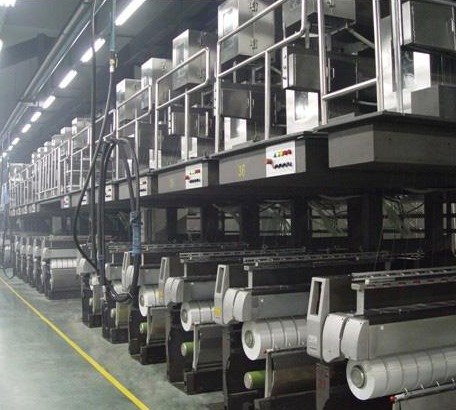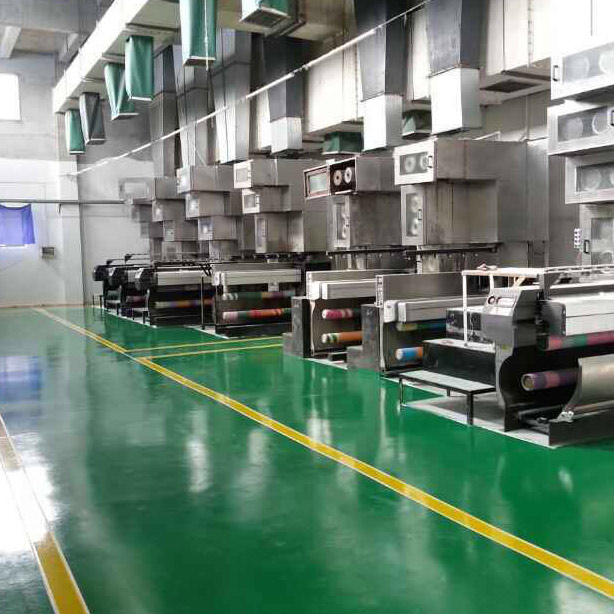- Polypropylene spinning machine
- Polypropylene FDY equipment
- Polyester POY spinning machine
- Polyamide FDY common and high strength equipment
- Polyester FDY equipment
- Polyester high strength equipment
- polyester、Polyamide、 Polypropylene BCF equipment
- Small spinning machine
- All kinds of spinning special parts
- The exchange event on the digital and intelligent transformation and development of the textile and garment industry was held in Haicheng
- During the White Dew season, meticulous considerations for polypropylene spinning production
- Education shapes talents, and craftsmanship empowers the future. Grateful for teachers' kindness and nurturing of students, Fubang Machinery wishes all teachers a happy Teachers' Day!
- The grand selection ceremony for the 2025 China National Textile and Apparel Council Science and Technology Award - Mulberry and Hemp Scholar Award was held
- The years have been eventful, and the heroes sing their praises. Fubang Machinery warmly congratulates the 80th anniversary commemoration of the Victory of the War of Resistance against Japanese Aggression on its complete success!
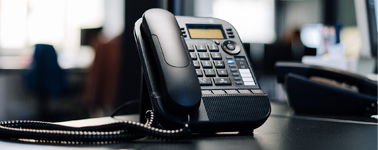
- Contact:Mr. Huang Guofu
- Cel:0086-13901505556
- Fax:0086-519-83341119
- Email:czfb5556@126.com
- Add:No. 288-8 ChangLi Rd, Huangli Town, Changzhou, JS PRV.
Seaweed fiber as a new type of biodegradable regenerated fiber, is seaweed plants (such as seaweed, seaweed) isolated alginic acid as raw material of fiber, its products have good biocompatibility, biodegradability and so on Special features, and rich in resources, it is estimated that the world's oceans have more than 25,000 kinds of seaweed [1], algae fiber excellent performance in the textile field and medical field has been widespread concern.
1 development of seaweed fiber
1.1 Development of foreign seaweed fiber
British chemist ECC Stanford [2-3] As early as January 12, 1881 published in a British patent, first introduced from the brown algae phytoplankton (LaminariaStenophylla) extracted from a gel-like material , He put the material extracted with dilute alkali solution named Algin, acid added after the gel is Alginic acid, that is, alginic acid.
In 1944, the British Speakman and Chamberlain published their research on alginate fiber [4-6]. Speakman and Chamberlain studied the properties of fibers processed from six groups of alginic acids with different molecular weights. The results show that the relative molecular mass of alginic acid has a certain effect on the strength of fiber, but its degree of influence is not great.
During the period from 1912 to 1940, some German, Japanese and British patents published reports of alginate salts that were available for soluble seaweed. It has been reported in 1947 that seaweed fiber with calcium alginate and sodium alginate as raw materials can be made into wool textiles, surgical gauze and wound covering materials. British studies in the 1960s and 1970s show that Steror's SORBSON is a well-preserved, well-worn wounded material that can be used to treat severe infections with seaweed fiber. The seaweed fiber and wound Exudate contact, the formation of hygroscopic gel, the wound can be kept moist, to promote rapid wound healing.
According to the literature, Japan's Acordis specialty fiber company is the world's first to achieve high-volume production of seaweed fiber manufacturers, the process is a leading position. Japan's Forest Company has developed a seaweed fiber [8], which is mainly extracted from seaweed algae powder, which consists of sodium alginate aqueous solution with CaCl2 as a coagulation bath, wetted and replaced with methanol (L.97g), the strength of 1.7cN / dtex (l.92g / d), the company since 1993 in the country sales of seaweed fiber towels, since 2000 in South Korea Sales seaweed fiber underwear, has been extended to Europe and Southeast Asia and other countries. Seaweed fiber can reflect far infrared rays, resulting in negative ion warming and health effects, in addition to clothing can also be used for food industry or pharmaceutical industry to do jelly or thickener, new use can do wound bandage or band-aid.
1.2 Development of domestic seaweed fiber
Gan Jinghao et al [9] reported the first study of alginate fiber in China. The research group as early as 1981, combined with foreign research on alginate fiber, with 5% sodium alginate spinning solution, by wet spinning preparation of calcium alginate fiber. It has been found that the concentration of calcium ions in the coagulation solution is diluted as a result of constant consumption, and it is most suitable to use a saturated aqueous solution of calcium chloride as a coagulating liquid for ease of control. The strength of the fibers after drying at 60 ° C under a pressure of 2000 Pa was 0.44 cN / dtex to 1.76 cN / dtex. Sun Yushan [10] in 1990 in detail the production process of alginate fiber. The fiber group obtained by wet spinning and stretched in a gaseous medium was 2.67 cN / dtex. In order to improve the chemical stability of calcium alginate fiber, the research group using cellulose acetate, polyvinyl alcohol, chitin and other fiber coating treatment, the fiber has a certain chemical stability, can be maintained in saline for two weeks Keep insoluble. After treatment of calcium alginate fibers with metal ions such as zinc, aluminum, iron, chromium and the like, the fibers can be insoluble after two months of immersion in physiological saline.
In 2004, Professor Xia Yanzhi of Qingdao University was appointed chief scientist of Qingdao seaweed fiber project. The application of seaweed fiber in the new technology and seaweed fiber in the functional textiles, essential flame retardant materials and other aspects of the application of innovation and development, opened up a new field of marine biological resources applications. Its main project 863 plan "seaweed resources from the processing of fiber and deep processing of key technology development" to carry out the industrial production of seaweed fiber.
In 2007, Qingdao University disclosed a patent for chitosan grafted seaweed fiber and its preparation and use [11]. This fiber has good hygroscopicity and antibacterial properties due to the surface coating of chitosan , And non-toxic, harmless, high safety and biodegradability, in medicine, environmental protection and other fields have a good application prospects, as a hemostatic treatment of new materials, especially for the manufacture of gauze wound dressings. Fiber strength: 1.5d ~ 2.5d. Elongation at break: 4% to 10%. Breaking strength: 1.8g / d ~ 3.1g / d.
2 seaweed fiber preparation
2.1 Preparation of raw materials
At present, in the preparation of seaweed fiber can be used as raw materials, the most commonly used is soluble sodium salt powder, that is, sodium alginate. The production process: first with dilute acid treatment of seaweed insoluble alginate into alginic acid, and then alkali heating extraction, the formation of soluble sodium salt dissolved, filtered, add calcium salt calcium alginate precipitation, the precipitation of acid Liquid treatment into insoluble alginic acid, dehydration after alkali conversion into sodium salt, after drying is sodium alginate.
2.2 Preparation of seaweed fiber
Seaweed fiber is usually prepared by wet spinning, that is, soluble alginate (usually sodium alginate) dissolved in water to form a viscous solution, and then through the spinneret hole to the divalent metal cation (Mg2 + excluded) in the coagulation bath , Forming a solid insoluble alginate filament filament.
3 characteristics of seaweed fiber
3.1 High hygroscopicity
Can absorb a lot of wound exudate, extend the time to replace the bandage, reduce the number of replacement and care time, reduce nursing costs.
3.2 easy to remove
The alginate fibers are contacted with the exudate to form a soft gel. High-M alginate fiber can be used to remove the warm saline solution to remove; high G alginate bandage puffs can be removed to remove the whole, the wound tissue of the new wound has a protective effect to prevent the removal of gauze when the wound caused by secondary trauma The
3.3 High oxygen permeability
After the moisture absorption to form a hydrophilic gel, combined with the hydrophilic group of "free water" to become oxygen transmission channel, oxygen adsorption - diffusion - desorption process, from the external environment into the wound tissue; and fiber high G The macromolecular skeletal junction of the fiber, the hard part of the hydrogel (oxygen through the pores) to avoid the wound hypoxia, promote wound healing.
Changzhou Fubon Chemical Fiber Machinery Factory mainly produces: polypropylene FDY spinning machine, polypropylene FDY production line, polypropylene FDY equipment, polypropylene FDY machinery, polyester POY spinning machine, polyester POY production line, polyester POY equipment, polyester POY machinery, FDY spinning machine, polyester FDY machine, polyester FDY equipment, polyester FDY production line, polyester FDY machine, nylon FDY spinning machine, nylon FDY production line, nylon FDY machinery, nylon FDY equipment, spandex spinning machine, spandex production line, spandex Equipment, spandex machinery, spinning special parts, polyester small experimental machine, polypropylene small experimental machine, nylon small experimental machine.
- Education shapes talents, and craftsmanship empowers the future. Grateful for teachers' ki
- The exchange event on the digital and intelligent transformation and development of the te
- During the White Dew season, meticulous considerations for polypropylene spinning producti
- The grand selection ceremony for the 2025 China National Textile and Apparel Council Scien
- The years have been eventful, and the heroes sing their praises. Fubang Machinery warmly c
- The romantic Qixi Festival is here! Fubang Machinery, with its exquisite craftsmanship, co
- The 2025 Qilu Fashion Conference was held in Jinan
- Comprehensive Analysis of Core Components of polypropylene spinning machines: From Screw E
- The Start of Autumn has arrived, and the coolness of autumn begins. From the solar terms t
- The Academic Conference on Intelligent Manufacturing and Industrial Upgrading of China's S

